
Keywords: modeling

|
Pulled, pushed or failed: the demographic impact of a gene drive can change the nature of its spatial spreadL. Kläy, L. Girardin, V. Calvez and F. Débarre, Journal of Mathematical Biology, 87:30. 2023.
Understanding the temporal spread of gene drive alleles-alleles that bias their own transmission-through modeling is essential before any field experiments. In this paper, we present a deterministic reaction-diffusion model describing the interplay between demographic and allelic ... Keywords: Cas9, CRISPR, gene drive synthetic, modeling, multiplex drives, population suppression, resistance, synthetic homing drive |
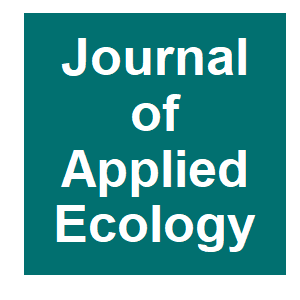
|
Estimating mosquito abundance and population suppression in an incompatible insect technique studyL. Griffin, D. Pagendam, C. Drovandi, B. Trewin and N. W. Beebe, Journal of Applied Ecology, 2023.
Our model can provide valuable insights that can shape decision support systems in sterile insect technique and incompatible insect technique programmes operating over large geographical scales. The model helps determine how many sterile/incompatible insects should be released ... Keywords: Cas9, CRISPR, gene drive synthetic, modeling, multiplex drives, population suppression, resistance, synthetic homing drive |

|
Harnessing Wolbachia cytoplasmic incompatibility alleles for confined gene drive: A modeling studyJ. Li and J. Champer, PLOS Genetics, 19:e1010591. 2023.
Wolbachia are maternally-inherited bacteria, which can spread rapidly in populations by manipulating reproduction. cifA and cifB are genes found in Wolbachia phage that are responsible for cytoplasmic incompatibility, the most common type of Wolbachia reproductive interference. ... Keywords: Cas9, CRISPR, gene drive synthetic, modeling, multiplex drives, population suppression, resistance, synthetic homing drive |

|
The effect of mating complexity on gene drive dynamicsP. Verma, R. G. Reeves, S. Simon, M. Otto and C. S. Gokhale, The American Naturalist, 2022.
Gene drive technology promises to deliver on some of the global challenges humanity faces today in health care, agriculture, and conservation. However, there is a limited understanding of the consequences of releasing self-perpetuating transgenic organisms into wild populations ... Keywords: Cas9, CRISPR, gene drive synthetic, modeling, multiplex drives, population suppression, resistance, synthetic homing drive |

|
Gene drive technology to suppress invasive miceUniversity of Adelaide, Phys Org, 2022.
Researchers at the University of Adelaide have released their first findings on the potential effectiveness of revolutionary gene drive technology to control invasive mice. The team has developed a world-first proof of concept for the technology—called t-CRISPR—using ... Keywords: Cas9, CRISPR, gene drive synthetic, modeling, multiplex drives, population suppression, resistance, synthetic homing drive |
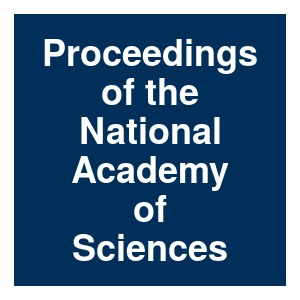
|
Leveraging a natural murine meiotic drive to suppress invasive populationsL. Gierus, A. Birand, M. D. Bunting, G. I. Godahewa, S. G. Piltz, K. P. Oh, A. J. Piaggio, D. W. Threadgill, J. Godwin, O. Edwards, P. Cassey, J. V. Ross, T. A. A. Prowse and P. Q. Thomas, Proceedings of the National Academy of Sciences, 119:e2213308119. 2022.
Invasive rodents are a major cause of environmental damage and biodiversity loss, particularly on islands. Unlike insects, genetic biocontrol strategies including population-suppressing gene drives with biased inheritance have not been developed in mice. Here, we demonstrate a ... Keywords: Cas9, CRISPR, gene drive synthetic, modeling, multiplex drives, population suppression, resistance, synthetic homing drive |

|
Anopheles homing suppression drive candidates exhibit unexpected performance differences in simulations with spatial structureS. E. Champer, I. K. Kim, A. G. Clark, P. W. Messer and J. Champer, eLife, 11:e79121. 2022.
Recent experiments have produced several Anopheles gambiae homing gene drives that disrupt female fertility genes, thereby eventually inducing population collapse. Such drives may be highly effective tools to combat malaria. One such homing drive, based on the zpg promoter ... Keywords: Cas9, CRISPR, gene drive synthetic, modeling, multiplex drives, population suppression, resistance, synthetic homing drive |

|
Externalities modulate the effectiveness of the Wolbachia release programmeE. E. Ooi and A. Wilder-Smith, The Lancet Infectious Diseases, 2022.
Despite the remarkable outcome in Yogyakarta, the wMel approach also has some challenges. In particular, the extent to which ecological, weather, and other external factors influence the dissemination and establishment of wMel in complex urban environments remains unclear. ... Keywords: Cas9, CRISPR, gene drive synthetic, modeling, multiplex drives, population suppression, resistance, synthetic homing drive |

|
Harnessing Wolbachia cytoplasmic incompatibility alleles for confined gene drive: a modeling studyJ. Li and J. Champer, bioRxiv, 2022.08.09.503337. 2022.
By using both mathematical and simulation models, we found that a drive containing CifA and CifB together create a confined drive with a moderate to high introduction threshold. When introduced separately, they act as a self-limiting drive. We observed that the performance of ... Keywords: Cas9, CRISPR, gene drive synthetic, modeling, multiplex drives, population suppression, resistance, synthetic homing drive |

|
A theory of resistance to multiplexed gene drive demonstrates the significant role of weakly deleterious natural genetic variationB. S. Khatri and A. Burt, Proceedings of the National Academy of Sciences, 119:e2200567119. 2022.
CRISPR-based gene drives have the potential for controlling natural populations of disease vectors, such as malaria-carrying mosquitoes in sub-Saharan Africa. If successful, they hold promise of significantly reducing the burden of disease and death from malaria and many other ... Keywords: Cas9, CRISPR, gene drive synthetic, modeling, multiplex drives, population suppression, resistance, synthetic homing drive |

|
Robust control strategy by the Sterile Insect Technique for reducing epidemiological risk in presence of vector migrationP.-A. Bliman and Y. Dumont, Mathematical Biosciences, 350:108856. 2022.
The Sterile Insect Technique (SIT) is a promising technique to control mosquitoes, vectors of diseases, like dengue, chikungunya or Zika. However, its application in the field is not easy, and its success hinges upon several constraints, one of them being that the treated area ... Keywords: Cas9, CRISPR, gene drive synthetic, modeling, multiplex drives, population suppression, resistance, synthetic homing drive |

|
Population replacement gene drive characteristics for malaria elimination in a range of seasonal transmission settings: a modelling studyS. Leung, N. Windbichler, E. A. Wenger, C. A. Bever and P. Selvaraj, Malaria Journal, 21:226. 2022.
BACKGROUND: Gene drives are a genetic engineering method where a suite of genes is inherited at higher than Mendelian rates and has been proposed as a promising new vector control strategy to reinvigorate the fight against malaria in sub-Saharan Africa. METHODS: Using an ... Keywords: Cas9, CRISPR, gene drive synthetic, modeling, multiplex drives, population suppression, resistance, synthetic homing drive |
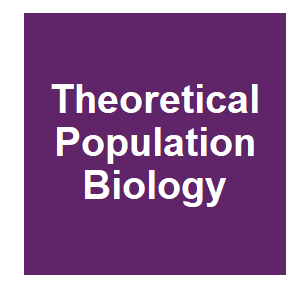
|
Adaptive meiotic drive in selfing populations with heterozygote advantageE. Brud, Theoretical Population Biology, 146:61-70. 2022.
The egalitarian allotment of gametes to each allele at a locus (Mendel's law of segregation) is a near-universal phenomenon characterizing inheritance in sexual populations. As exceptions to Mendel's law are known to occur, one can investigate why non-Mendelian segregation is not ... Keywords: Cas9, CRISPR, gene drive synthetic, modeling, multiplex drives, population suppression, resistance, synthetic homing drive |

|
The effect of mating complexity on gene drive dynamicsP. Verma, R. G. Reeves, S. Simon, M. Otto and C. S. Gokhale, bioRxiv, 2021.09.16.460618. 2022.
Gene drive technology promises to deliver on some of the global challenges humanity faces today in healthcare, agriculture and conservation. However, there is a limited understanding of the consequences of releasing self-perpetuating transgenic organisms into the wild populations ... Keywords: Cas9, CRISPR, gene drive synthetic, modeling, multiplex drives, population suppression, resistance, synthetic homing drive |

|
Adversarial interspecies relationships facilitate population suppression by gene drive in spatially explicit modelsY. Liu, W. Teo, H. Yang and J. Champer, bioRxiv, 2022.05.08.491087. 2022.
Suppression gene drives are designed to bias their inheritance and increase in frequency in a population, disrupting an essential gene in the process. When the frequency is high enough, the population will be unable to reproduce above the replacement level and could be ... Keywords: Cas9, CRISPR, gene drive synthetic, modeling, multiplex drives, population suppression, resistance, synthetic homing drive |

|
A metapopulation approach to identify targets for Wolbachia-based dengue controlA. Reyna-Lara, D. Soriano-Paños, J. H. Arias-Castro, H. J. Martínez and J. Gómez-Gardeñes, Chaos, 32:041105. 2022.
Over the last decade, the release of Wolbachia-infected Aedes aegypti into the natural habitat of this mosquito species has become the most sustainable and long-lasting technique to prevent and control vector-borne diseases, such as dengue, zika, or chikungunya. However, the ... Keywords: Cas9, CRISPR, gene drive synthetic, modeling, multiplex drives, population suppression, resistance, synthetic homing drive |

|
Finding the strongest gene drive: Simulations reveal unexpected performance differences between Anopheles homing suppression drive candidatesS. E. Champer, I. K. Kim, A. G. Clark, P. W. Messer and J. Champer, bioRxiv, 2022.03.28.486009. 2022.
Recent experiments have produced several Anopheles gambiae homing gene drives that disrupt female fertility genes, thereby eventually inducing population collapse. Such drives may be highly effective tools to combat malaria. One such homing drive, based on the zpg promoter ... Keywords: Cas9, CRISPR, gene drive synthetic, modeling, multiplex drives, population suppression, resistance, synthetic homing drive |
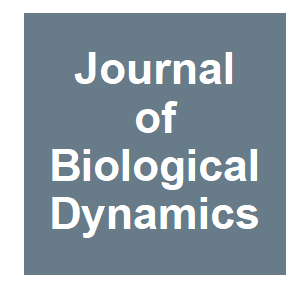
|
Uniqueness and stability of periodic solutions for an interactive wild and Wolbachia-infected male mosquito modelR. Yan and Q. Sun, Journal of Biological Dynamics, 2022.
We investigate a mosquito population suppression model, which includes the release of Wolbachia-infected males causing incomplete cytoplasmic incompatibility (CI). The model consists of two sub-equations by considering the density-dependent birth rate of wild mosquitoes. By ... Keywords: Cas9, CRISPR, gene drive synthetic, modeling, multiplex drives, population suppression, resistance, synthetic homing drive |
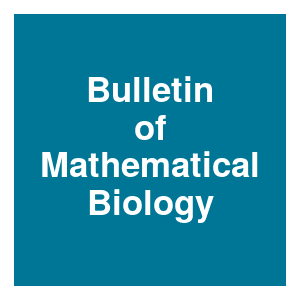
|
Effects of Sterile Males and Fertility of Infected Mosquitoes on Mosquito-Borne Disease DynamicsX. L. Sun, S. Q. Liu, Y. F. Lv and Y. Z. Pei, Bulletin of Mathematical Biology, 84:33. 2022.
By studying an infection-age structured model, we consider the effects of releasing sterile males and the fertility of infected mosquitoes on the mosquito-borne diseases transmission including the extinction of mosquitoes, the elimination and persistence of diseases. Firstly, ... Keywords: Cas9, CRISPR, gene drive synthetic, modeling, multiplex drives, population suppression, resistance, synthetic homing drive |
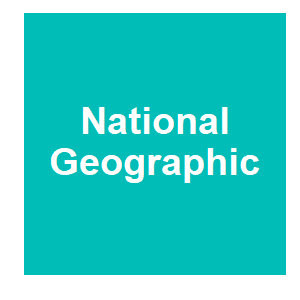
|
The prince, the mayor, and the U.S. fish that ate JapanC. Elliot, National Geographic, 2022.
When Crown Prince Akihito visited Chicago on October 3, 1960, his sole request was to visit Shedd Aquarium. Then Mayor Richard J. Daley, an avid angler, presented the prince with a gift that he scooped with a net from one of the tanks himself: 18 bluegills, the official Illinois ... Keywords: Cas9, CRISPR, gene drive synthetic, modeling, multiplex drives, population suppression, resistance, synthetic homing drive |
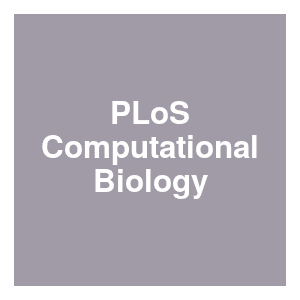
|
Modeling CRISPR gene drives for suppression of invasive rodents using a supervised machine learning frameworkS. E. Champer, N. Oakes, R. Sharma, P. García-Díaz, J. Champer and P. W. Messer, PLoS Comput Biol, 17:e1009660. 2021.
Invasive rodent populations pose a threat to biodiversity across the globe. When confronted with these invaders, native species that evolved independently are often defenseless. CRISPR gene drive systems could provide a solution to this problem by spreading transgenes among ... Keywords: Cas9, CRISPR, gene drive synthetic, modeling, multiplex drives, population suppression, resistance, synthetic homing drive |
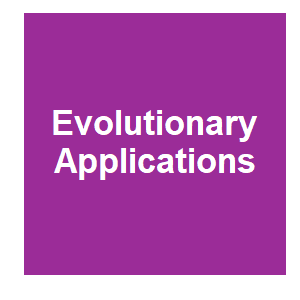
|
Modeling impact and cost-effectiveness of driving-Y gene drives for malaria elimination in the Democratic Republic of the CongoN. Metchanun, C. Borgemeister, G. Amzati, J. von Braun, M. Nikolov, P. Selvaraj and J. Gerardin, Evolutionary Applications, 2021.
Malaria elimination will be challenging in countries that currently continue to bear high malaria burden. Sex-ratio distorting gene drives, such as driving-Y, could play a role in an integrated elimination strategy if they can effectively suppress vector populations. Using a ... Keywords: Cas9, CRISPR, gene drive synthetic, modeling, multiplex drives, population suppression, resistance, synthetic homing drive |

|
Demographic feedbacks can hamper the spatial spread of a gene driveL. Girardin and F. Débarre, Journal of Mathematical Biology, 83:67. 2021.
This paper is concerned with a reaction–diffusion system modeling the fixation and the invasion in a population of a gene drive (an allele biasing inheritance, increasing its own transmission to offspring). In our model, the gene drive has a negative effect on the fitness of ... Keywords: Cas9, CRISPR, gene drive synthetic, modeling, multiplex drives, population suppression, resistance, synthetic homing drive |

|
Quantifying the risk of vector-borne disease transmission attributable to genetically modified vectorsG. R. Hosack, A. Ickowicz and K. R. Hayes, Royal Society Open Science, 8:201525. 2021.
The relative risk of disease transmission caused by the potential release of transgenic vectors, such as through sterile insect technique or gene drive systems, is assessed with comparison with wild-type vectors. The probabilistic risk framework is demonstrated with an assessment ... Keywords: Cas9, CRISPR, gene drive synthetic, modeling, multiplex drives, population suppression, resistance, synthetic homing drive |

|
A confinable home and rescue gene drive for population modificationN. P. Kandul, J. Liu, J. B. Bennett, J. M. Marshall and O. S. Akbari, eLife, 10:e65939. 2021.
Homing based gene drives, engineered using CRISPR/Cas9, have been proposed to spread desirable genes throughout populations. However, invasion of such drives can be hindered by the accumulation of resistant alleles. To limit this obstacle, we engineer a confinable population ... Keywords: Cas9, CRISPR, gene drive synthetic, modeling, multiplex drives, population suppression, resistance, synthetic homing drive |

|
Design and analysis of CRISPR-based underdominance toxin-antidote gene drivesJ. Champer, S. E. Champer, I. K. Kim, A. G. Clark and P. W. Messer, Evolutionary Applications, 18. 2020.
We model drives which target essential genes that are either haplosufficient or haplolethal, using nuclease promoters with expression restricted to the germline, promoters that additionally result in cleavage activity in the early embryo from maternal deposition, and promoters ... Keywords: Cas9, CRISPR, gene drive synthetic, modeling, multiplex drives, population suppression, resistance, synthetic homing drive |

|
Gene Drives across engineered fitness valleys: Modeling a design to prevent drive spillover.F. J. H. de Haas and S. Otto, bioRxiv, 2020.10.29.360404. 2020.
We model a proposed drive system that transitions in time from a low threshold drive system (homing-based gene drive) to a high threshold drive system (underdominance) using daisy chain technology. This combination leads to a spatially restricted drive strategy while maintaining ... Keywords: Cas9, CRISPR, gene drive synthetic, modeling, multiplex drives, population suppression, resistance, synthetic homing drive |

|
Gene Drives: Dynamics and Regulatory Matters-A Report from the Workshop “Evaluation of Spatial and Temporal Control of Gene Drives,” April 4-5, 2019, ViennaB. Giese, J. L. Friess, N. H. Barton, P. W. Messer, F. Debarre, M. F. Schetelig, N. Windbichler, H. Meimberg and C. Boete, Bioessays, 41:3. 2019.
Gene Drives are regarded as future tools with a high potential for population control. Due to their inherent ability to overcome the rules of Mendelian inheritance, gene drives (GD) may spread genes rapidly through populations of sexually reproducing organisms. A release of ... Keywords: Cas9, CRISPR, gene drive synthetic, modeling, multiplex drives, population suppression, resistance, synthetic homing drive |

Contact
David O’Brochta
Foundation for the
National Institutes of Health
geneconvenevi@fnih.org
RSS

